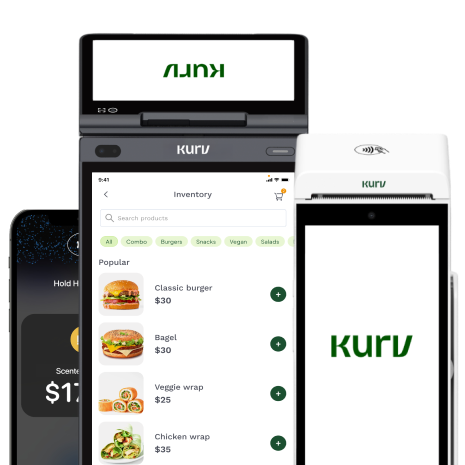Along your merchant journey, you’ll likely encounter different pricing models that offer different benefits. However, few will be as transparent, flexible, and merchant-friendly as the interchange plus pricing model.
The interchange plus pricing model provides straightforward pricing and cost-saving benefits for businesses that process a large volume of transactions or diverse transaction types. In this article, we’ll explore interchange plus pricing, how it works, and how it compares to other credit card processing fees.
Key Takeaways:
- Interchange fees afford merchants a higher degree of financial transparency when compared to tiered or flat-rate pricing.
- Interchange plus pricing is set in place by major card networks like Visa and Mastercard.
- Interchange plus pricing is renowned for its benefits, which include optimizing expenses and achieving a greater degree of cost-efficiency
What Is Interchange Plus Pricing?
Interchange plus pricing operates on a straightforward principle: businesses pay the interchange fee mandated by card networks plus a fixed markup determined by the payment processor. Unlike tiered or flat-rate pricing, interchange plus affords merchants a heightened degree of transparency. Merchants can easily see the exact interchange rate and markup applied to each transaction, without dealing with complex calculations or fluctuating rates based on transaction amounts.
How Interchange-Plus Pricing Works
Interchange plus pricing is a clear and easy-to-follow method for calculating credit card processing fees. It consists of two main components.
First, the card networks (Visa, Mastercard, etc.) establish the interchange fee. These networks create the interchange category based on factors such as card type and processing method. The specific category can vary depending on the card network.
Did you know…
The “plus” in “interchange plus” refers to the payment processor’s markup, known as the authorization fee. This markup is a fixed amount added to the interchange fee, making it easy for merchants to predict, as it doesn’t change with the transaction type or category.
These fees—the interchange charges and the processor’s markup—combine to form the total cost charged to the merchant. Payment processors often advertise their rates as ‘Interchange + X,’ X being their fixed markup. This format allows merchants to compare different processors easily.
Overall, interchange plus pricing offers transparency, allowing merchants to understand precisely what they are being charged for each transaction. This clarity helps merchants create more accurate fee breakdowns, ensuring manageable costs.
What is a good Interchange Plus rate?
Determining a “good” interchange plus rate depends on several factors specific to your business. These factors include your business’s nature, transaction volume, and average ticket size. Competitive interchange-plus rates typically range from 0.20% to 0.50%, which are added to the base interchange fee.
However, it is crucial to look beyond the rates when choosing a processor. Assess each processor’s overall value proposition, considering aspects such as technological capabilities, integrations with other systems, customer service quality, and any additional fees that may apply. Competitive interchange-plus rates typically range from 0.20% to 0.50%, which are added to the base interchange fee.
Interchange Plus Pricing Compared to Other Pricing Models
Understanding how interchange-plus pricing compares to other models is essential for merchants. Let’s see how some of the others operate.
Interchange-Plus Vs. Tiered Pricing
- Tiered pricing was once the industry processing standard. The method categorized transactions into tiers—typically qualified, mid-qualified, and non-qualified—with fees ranging from 1.4% to 4%.
- While this model might seem simple, it allows payment processors considerable leeway in categorizing transactions using opaque criteria, often in ways that maximize their revenue at the merchant’s expense.
- Sales tactics can blur the line between tiered and fixed pricing, often luring businesses with low rates that mainly apply to higher-cost transactions.
- The markup for interchange plus pricing remains unchanged regardless of the transaction type.
Interchange-Plus vs. Flat-Rate Pricing
- Flat-rate pricing charges a uniform rate for all transactions regardless of the interchange category.
- Square charges a flat rate of 2.75% for swiped, dipped, or tapped payments. However, this excludes keyed-in payments, where the fee goes up to 3.5% + $0.15.
- This model is more predictable than tiered pricing but can be costly for businesses with many debit card transactions, as flat-rate pricing may overcharge due to typically lower debit interchange and assessment fees.
- Interchange-plus pricing reduces costs based on transaction details, business type, and volume, providing value through transparent payments.
Is Interchange Plus the best pricing model?
- Interchange plus pricing is highly favorable for merchants due to its separation of costs and potential cash-saving benefits. However, choosing your business’s “best” pricing model depends on a number of assorted needs and circumstances.
- Flat-rate pricing might be precisely what you need for those with low transaction volumes. Your business and pricing models will play a big role in this.
- However, for businesses that process a large and diverse range of transactions, interchange plus pricing offers clarity and honesty, making it one of the most popular options on the market.
Benefits of Having Interchange Plus Pricing
The advantages of interchange plus pricing are:
- Separation of costs: By separating processing fees from the interchange rate, businesses can optimize their interchange expenses. This allows merchants to easily discern the exact costs associated with each transaction, facilitating quick and straightforward comparisons between payment processors.
- Cost-efficiency: Interchange plus pricing ensures businesses pay only the interchange fee plus a fixed markup. This model helps minimize superfluous expenses and allows businesses to tailor their costs according to their specific type. Some of these factors include industry, transaction volume, and business model.
- Flexibility: This pricing model accommodates businesses of all sizes and volumes.
How to get Interchange Plus Credit Card Processing
Securing interchange plus credit card processing involves partnering with a reputable payment processor that offers top-tier merchant services. Here are the steps to follow:
Research Payment Processors
Start by exploring the details of reputable payment processors, particularly those that specialize in your industry and those known for their interchange plus pricing models.
Obtain and Compare Quotes
Get quotes from these processors for a thorough cost comparison. Don’t just focus on interchange rates; consider customer service and additional merchant services such as reporting and fraud prevention tools.
Negotiate Terms
As a final step, remember to negotiate the terms. When you opt for interchange plus pricing, ensure clarity regarding all fees and contractual obligations.
Final Thoughts on Interchange Plus Credit Card Processing
In the right circumstances, interchange plus pricing is a highly effective option for credit card processing fees. Businesses that embrace this model can navigate these fees with clarity and confidence. When shopping around for a payment partner, prioritize those with a straightforward, no-B.S. approach to fees to ensure you always get the best for your business!




























